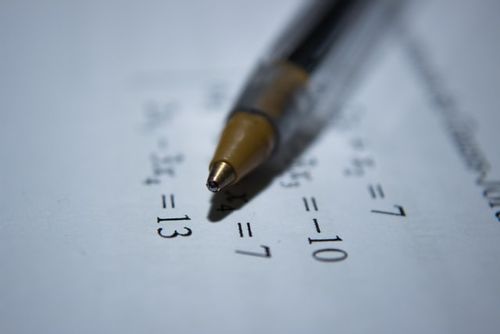FOR ALL AGES
Image © Pixabay, under a creative commons licence.
KS2 maths expands upon previous simplified learning, introducing the concept of using negative numbers. With practical resources and teaching ideas, our site can help you guide your child through the basics and beyond.
Students are introduced to numbers less than zero in Year 4 where they will begin learning about negative numbers line (either horizontal or in a ladder) and will be expected to ace a count back from 0. Year 5 adds counting forward and back into the mix, and with practice, your child will also be able to recognise negative numbers in a day to day situation. Once they've conquered the basics, it's time to calculate sums mentally, master the differences between negative and positive numbers, and read a positive or negative temperature on a line graph.
It's a step by step process to learn about a negative number, how negative numbers are used and giving your child the tools to solve negative numbers word problems. But we've explained here what you and our child need to know about negative numbers, and how you can help engage your child as they progress through negative numbers KS2.
Key Stage 2 maths covers primary Year 3 to Year 6, but it is in Year 4 where the maths skills expand to include numbers less than zero, and this is introduced through negative number lines. Using visual aids is a great way to practice counting negative numbers, and also see how they are written, teaching the child that a positive number is displayed on its own, and a negative has a minus symbol in front of it like you would see on a temperature thermometer.

Image © Jaroslaw Kwoczala, under a creative commons licence.
Along with counting forwards and backwards, as your child progresses they will also use exercises and negative number games to place negative and positive numbers in line order, and identify the differences between two negative numbers, such as two minus temperature readings.
Temperature is one common way we all use negative numbers in context, but there are others, so why not make homework fun and use interests in sums or examples for your children? You could make up negative numbers questions on goal and points difference in football, golf scores, or maybe get them to count the depth different sea creatures live below sea level. Why not see how many links between positive and negative numbers and everyday life you can find?
Running through all the teaching from when the topic is first introduced, to more advanced skills in Year 6, are the rules that control positive and negative numbers, rules that your children will soon master. Whether they are reading temperature or solving negative numbers maths problems, don't forget that:
If the numerical signs are different (positive and negative) then the result will be negative.
When the signs are the same however your children will find a positive answer.
These rules apply to adding, subtracting, dividing, or multiplying negative numbers, and it will help to have them in mind, as your child's maths skills grow.
It's important to use a variety of different methods to help children learn positive and negative numbers, and how to use a number line. You could get them to make and decorate their own number line and add in their favourite toy to jump up and down the line when they solve problems or compare the temperature between a fridge and a freezer (are there negative numbers?).
Whatever primary year your children are in, they will all enjoy playing Minus Miners, a problem solving negative numbers game designed and developed by students who won the Cracking The Code National Maths Competition. A surefire way for your child to practice all they have learned using a negative number line, about subtracting or adding negative numbers.
Read The Disclaimer
At Kidadl we pride ourselves on offering families original ideas to make the most of time spent together at home or out and about, wherever you are in the world. We strive to recommend the very best things that are suggested by our community and are things we would do ourselves - our aim is to be the trusted friend to parents.
We try our very best, but cannot guarantee perfection. We will always aim to give you accurate information at the date of publication - however, information does change, so it’s important you do your own research, double-check and make the decision that is right for your family.
Kidadl provides inspiration to entertain and educate your children. We recognise that not all activities and ideas are appropriate and suitable for all children and families or in all circumstances. Our recommended activities are based on age but these are a guide. We recommend that these ideas are used as inspiration, that ideas are undertaken with appropriate adult supervision, and that each adult uses their own discretion and knowledge of their children to consider the safety and suitability.
Kidadl cannot accept liability for the execution of these ideas, and parental supervision is advised at all times, as safety is paramount. Anyone using the information provided by Kidadl does so at their own risk and we can not accept liability if things go wrong.
Kidadl is independent and to make our service free to you the reader we are supported by advertising.
We hope you love our recommendations for products and services! What we suggest is selected independently by the Kidadl team. If you purchase using the buy now button we may earn a small commission. This does not influence our choices. Please note: prices are correct and items are available at the time the article was published.
Kidadl has a number of affiliate partners that we work with including Amazon. Please note that Kidadl is a participant in the Amazon Services LLC Associates Program, an affiliate advertising program designed to provide a means for sites to earn advertising fees by advertising and linking to amazon.
We also link to other websites, but are not responsible for their content.
Was this article helpful?



Browse Category



We’ll send you tons of inspiration to help you find a hidden gem in your local area or plan a big day out.



Check your inbox for your latest news from us. You have subscribed to:
Remember that you can always manage your preferences or unsubscribe through the link at the foot of each newsletter.